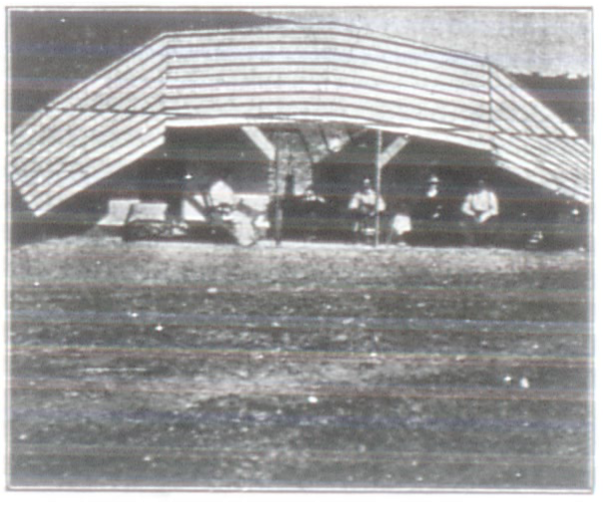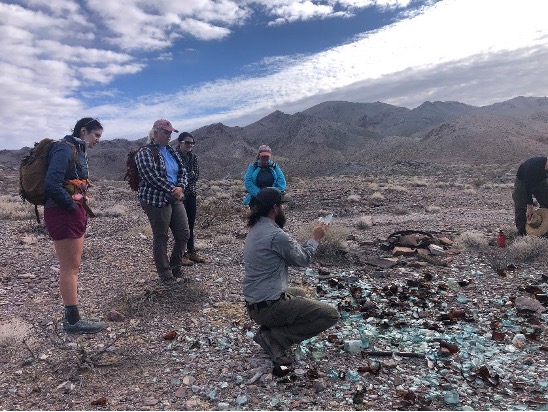In the early 1900s, a series of gold and silver discoveries in the area sparked a revival in prospecting throughout the Funeral Range. Founded around Christmas of 1905 down Echo Canyon, Schwab was named after Charles M. Schwab, the American steel magnate who had a prosperous mine near Rhyolite (not to be confused with Charles R. Schwab of banking fame). The town did not begin actually building until the first of January 1907, but it quickly established all the necessities of a mining town, including a bakery, restaurant, and saloon. What truly put Schwab on the map, however, was the people running it:

The Death Valley Chuck-Walla and other news sources of the time were fascinated by this mining town run by women. The main organizer and leader of the town was Gertrude Fesler. She was a stockbroker from Chicago who moved to Rhyolite to capitalize on lucrative mining claims and ended up purchasing a one-third interest in the new townsite of Schwab. Her business partners were Col. Dunn and Mr. Black, but Dunn quickly “decided that his wife could as ably care for his interest in Schwab as he,” and Helen Black bought out her husband’s share. Schwab became known not for its gold or amenities, but rather for the women running and promoting it.

Why don’t we know more about Schwab?
There are a few reasons, and it largely depends on who you ask. Many people say it is because the women were too concerned with making a “respectable” camp than a successful one—outlawing drinking, gambling, and prostitution. The more likely reason is that it was around for less than a year before disbanding in the face of the Financial Panic of 1907. In fact, all other camps in the Echo-Lee mining district shut down in 1907 besides Lee Camp, which was able to stay open because it was the most accessible by rail line.
Because Schwab was run and promoted by women, many people blamed female leadership Because the townsite was run and promoted by women, its rapid downfall had to be tied to the women. Lingenfelter even wrote “the women started worrying about the morality of their new offspring,” blaming their motherly nature for smothering the drinking, gambling, and prostitution that kept mining towns alive.
The history of Schwab in the archive and the story on the ground describe two different narratives. Jeremy Stoltzfus, a mining historian, led a recent Cultural In-Service trip to visit Schwab. Stoltzfus and trip participants looked at the archaeological evidence still surrounding the major tent sites, including the site believed to be the tent in the black and white image above.
Stoltzfus showed the group a large deposit of beer and wine bottles, as well as a large cache of champagne muzzles or “cage agraffes” (the metal piece securing the cork) directly across from the main tent site. Not only can we see clear evidence of drinking in the town, but we can also see the bottles and corks are found next to the main tent where the women are pictured having tea.


Visiting the site allows us to question the written record and complicated history—did this town really shut down because the women ran the miners out of town with their abolitionist policies? Probably not. Researching the history of Schwab is a great example of why history and archaeology always need to be in conversation with one another—together, they paint a more complete picture than either field could in isolation.
We are still learning a lot about townsites in Death Valley. Schwab was a unique townsite operated by women, but it fell victim to the same financial crisis as many other towns in the area.
